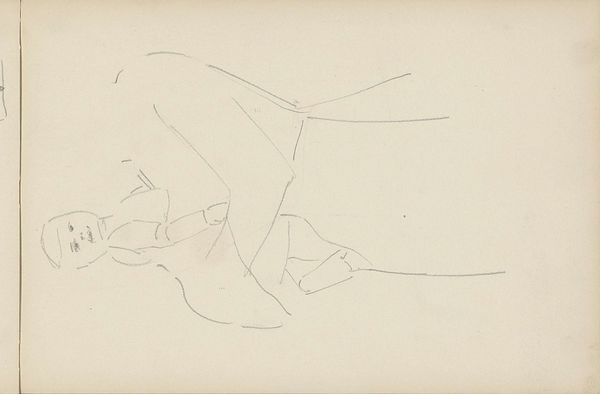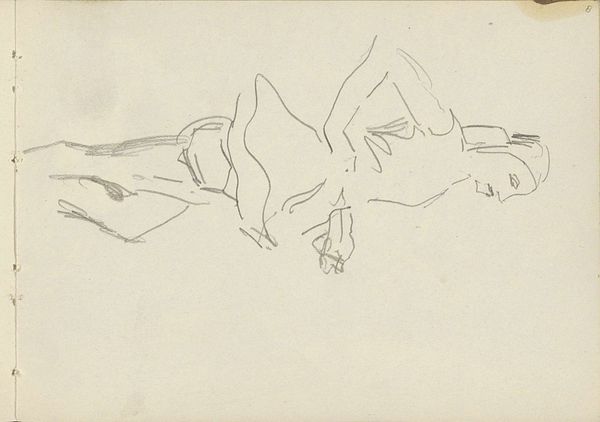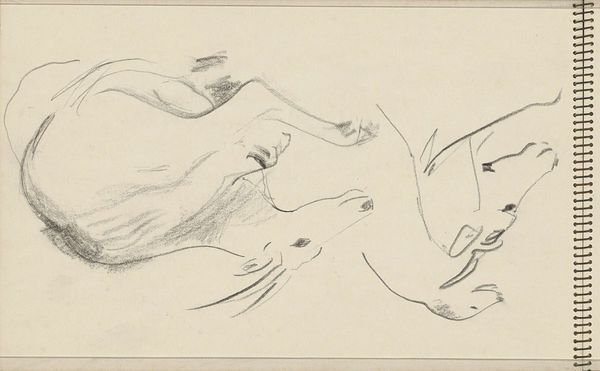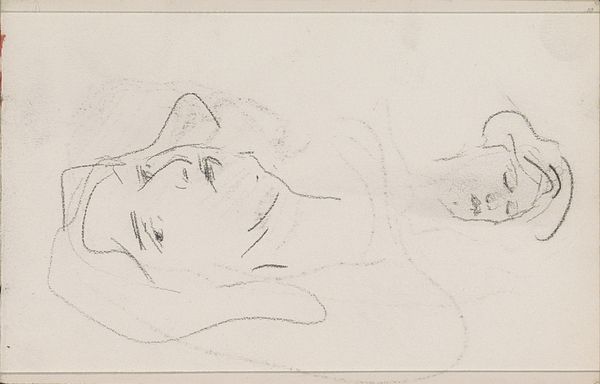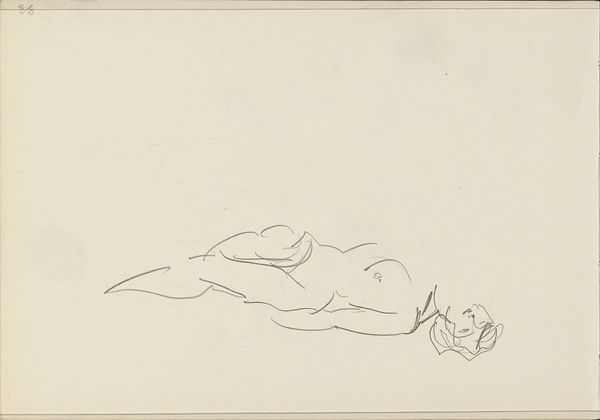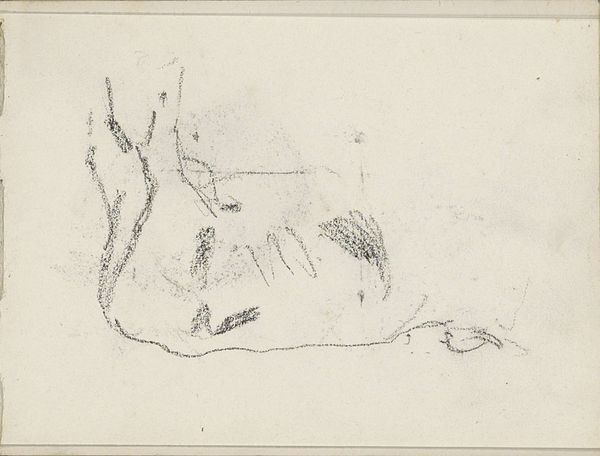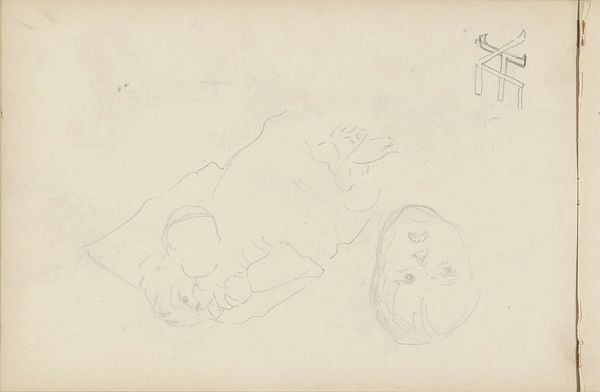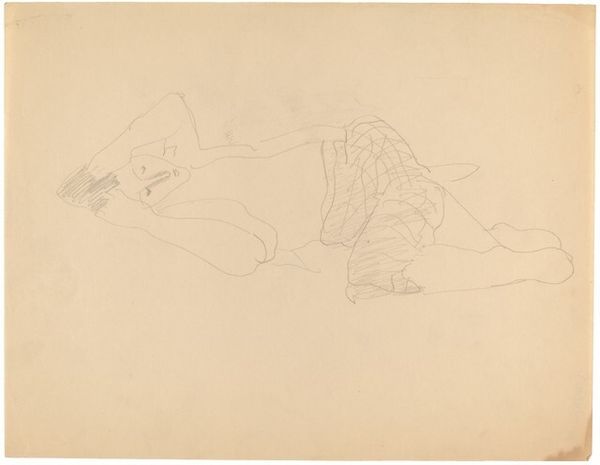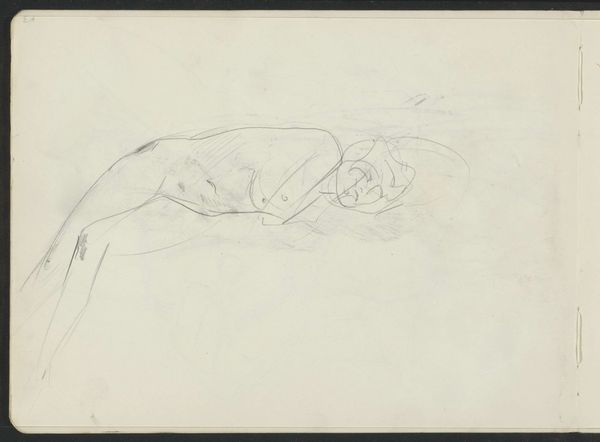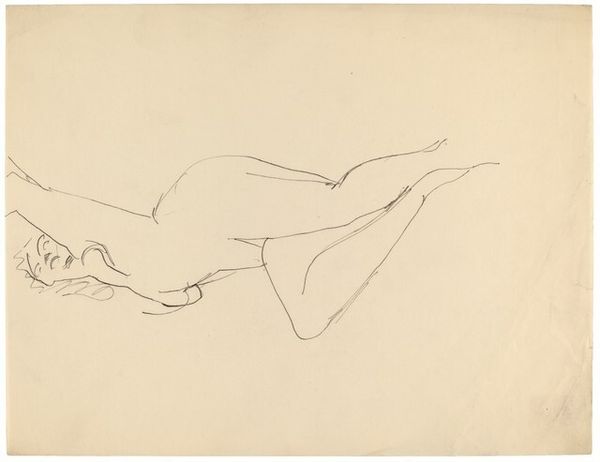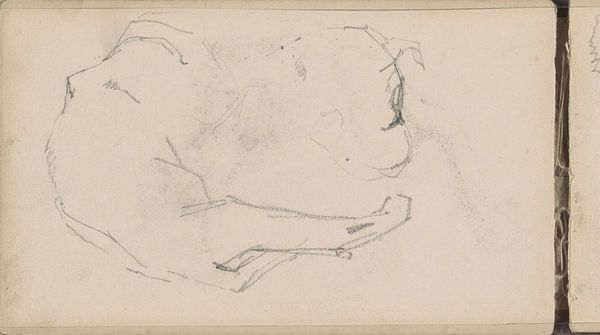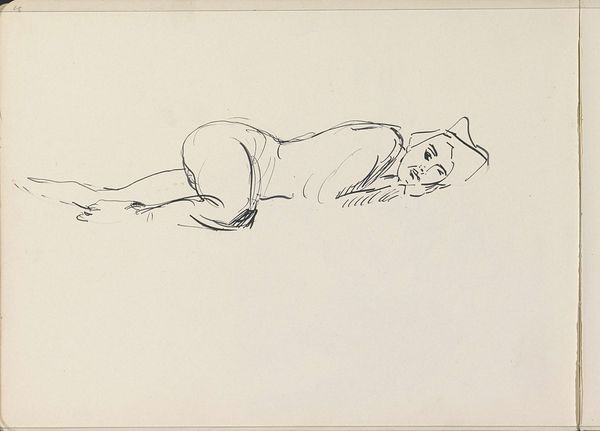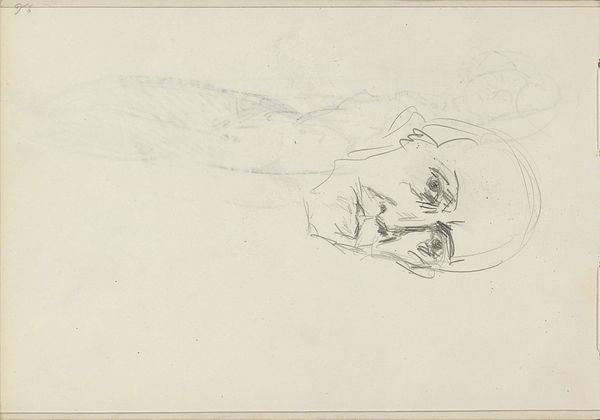
drawing, pencil
#
portrait
#
drawing
#
face
#
pencil sketch
#
landscape
#
figuration
#
form
#
pencil
Copyright: Rijks Museum: Open Domain
Curator: Carel Adolph Lion Cachet’s pencil drawing, “Face, an Arm and a Hand”, was completed around 1908 and now resides here at the Rijksmuseum. Editor: There's an immediacy to this drawing. It feels more like a study in progress rather than a finished piece. The light pencil work gives it an ephemeral, almost ghostly, quality. Curator: Cachet, though celebrated for his textile designs and his role in shaping Dutch visual culture through graphics and typography, occasionally delved into such intimate figural studies. They provide a glimpse into his wider artistic exploration, don’t you think? It offers another aspect to the creative climate of the period, with form being actively experimented on across genres. Editor: Absolutely. I'm particularly drawn to the rendering of the face, it's rudimentary yet emotionally evocative. The strategic use of shadow gives depth and form despite the absence of precise detail. I keep wondering though if its casual nature is deceiving. Is it actually a highly refined exercise in restraint, making use of the negative space in terms of composition? Curator: These fleeting works on paper offer invaluable insight into the social context of artistic practice during the early 20th century. This wasn't a commission; rather it’s probably Cachet in private exploration, a chance to look at human anatomy through a uniquely expressive lens. It reflects an atmosphere that welcomed personal introspection, and experimentation outside official channels. Editor: I see your point about context. But consider the formal tension he creates. Look at the contrast between the comparatively well-defined hands and the vaguer, almost dissolving facial features. What does that juxtaposition tell us about his priorities in that very moment of artistic representation? The play of lines almost guides the viewer's gaze and provides movement to an otherwise static artwork. Curator: That contrast is perhaps a consequence of function: quick sketches meant for future work rather than stand-alone display. Understanding Cachet's status and the prevailing artistic expectations lets us interpret the function of pieces such as this more clearly. We see the freedom he probably possessed to deviate from more conventional subjects in the early 1900s. Editor: Perhaps. Either way, it has this rare, compelling ambiguity in its execution that holds my gaze. Curator: It shows Cachet to be far more than just a textiles or graphic designer; this is an insight into his mind and methods. Editor: Precisely, it's fascinating how so few lines can hold so much tension and ambiguity. It reveals his artistic essence.
Comments
No comments
Be the first to comment and join the conversation on the ultimate creative platform.
